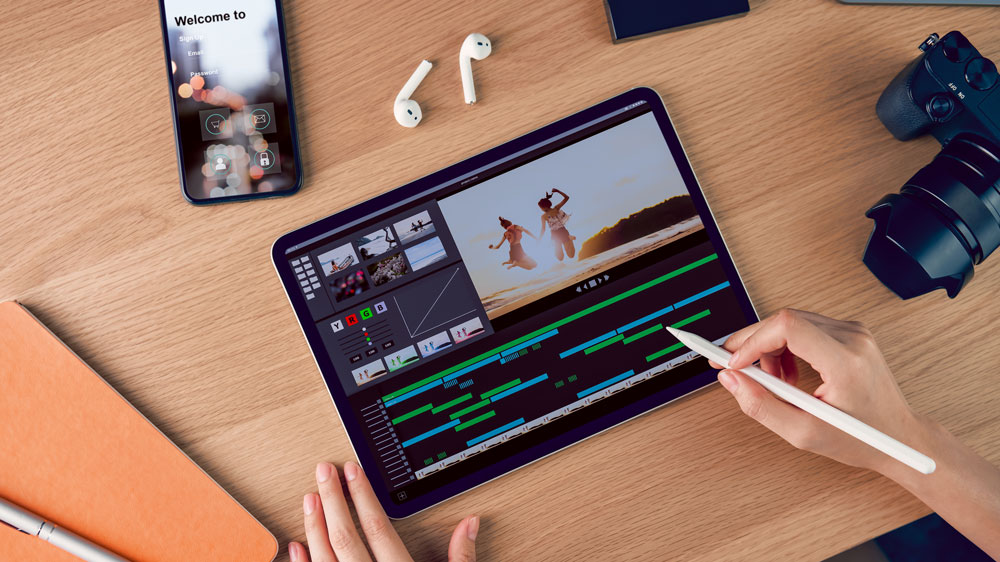
When deciding between online video editing courses, it can be easy to get a little lost. There's a lot of choice out there so even getting started can feel overwhelming. One size doesn't fit all, and the perfect course for your needs will depend on your preferred software, budget and learning style. So, we've gathered the best video editing courses out there today, to help you decide.
There's something for everyone here, so you're sure to find what you're looking for by soaking in all the info we've found. And when you've decided, we've also listed all the best video editing laptops to help get you off to the best start. If that isn't enough for you, there's also the best video editing apps, the best video editing software and the best video editing apps for YouTube to check out. but for now, read on for our pick the most brilliant online video editing courses out there.
01. Larry Jordan

- Pros: Industry focused, expert insights
- Cons: Can’t download videos, 3 months minimum subscription
- Go to site
Who better to learn about video editing than someone with a stellar career and reputation in the industry? Larry Jordan is an award-winning producer, director, editor, teacher and trainer who’s worked for US television for the last five decades. He launched a website offering online courses in 2003, specifically to enable editors, directors and producers to learn more about the evolving technology of media.
Jordan's lessons explain the fundamentals of the software, then illustrate them with stories on how they're used in real-world projects. There's a big focus on updates to these tools, so that regular users can understand the latest features and what they can be used for. Software covered in these online video editing courses include Adobe tools (Premiere Pro, Photoshop, After Effects, Audition, Encore, Media Encoder, Prelude) and Apple tools (Compressor, Final Cut Pro X, Motion).
There are well over 2,000 courses in video editing to choose from, and you get access to all of them for $19.99 a month (for a minimum of three months on the basic plan) along with webinars, tutorials and newsletters. Alternatively, you can pay for courses and webinars individually.
All lessons are streamed, but there's no option for subscribers to download videos. There’s also no free trial option, although there is a selection of free tutorials so you can see what kind of thing is on offer.
02. Inside the Edit
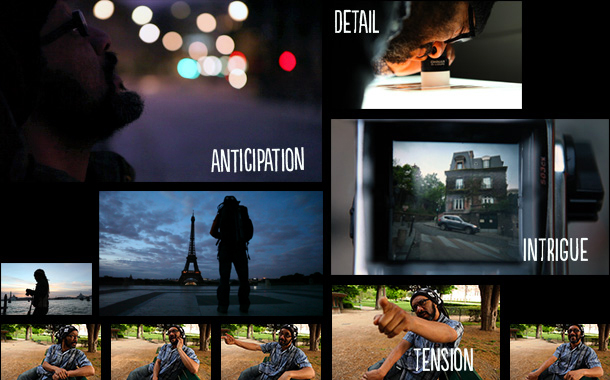
- Pros: Creative focus, unique angle
- Cons: Can't download videos, doesn't teach software
- Go to site
Are you already working as a video editor, or close to getting your first job? Need training that goes beyond the basics, and gets into the nitty-gritty of what’s really needed in the real world of video editing?
Inside The Edit doesn't teach you any actual software skills. Instead, it describes itself as “the world’s first creative editing course”. Developed by professional editors working in the industry and used by big names such as Discovery, Sky and Universal, it details hundreds of specific structural, journalistic and creative techniques used in documentary and entertainment television.
The tutorials, then, are a mix of high-end editing theory, footage analysis and timeline demonstration, and you’ll get 35 hours of real-world rushes (raw footage) to practise on, plus 2,000 music tracks to score with. There are also lessons on the secondary skills needed by video editors; as “psychologists, diplomats and social chameleons”.
In short, this course is not at all suitable for beginners at video editing. But for anyone working in (or close to working in) the narrative-based television found in documentaries, entertainment shows and reality TV, it could provide just the boost you need to reach the next level in your career.
03. Video editing courses with Udemy
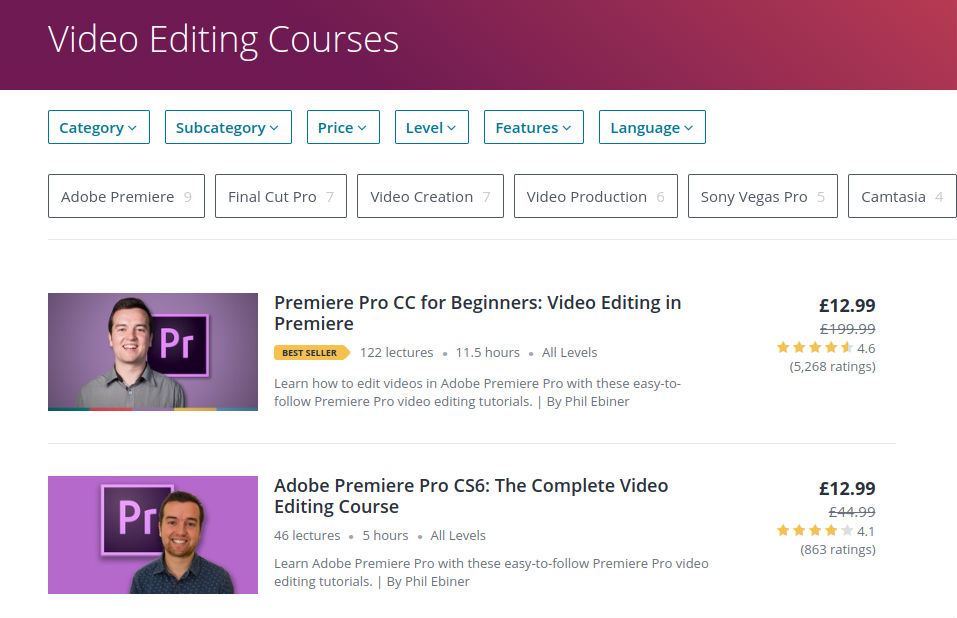
- Pros: Cheap, videos can be downloaded
- Cons: Variable quality, some courses are quite short
- Go to site
Udemy is an online learning platform aimed at digital professionals, containing more than 80,000 courses in total – including many online video editing courses. The variety means that if you need to master a particular tool, you’re very likely to find a course for your needs.
There are around 100 video editing courses on the site, covering tools including Premiere Pro, Final Cut Pro, Sony Vegas Pro, and Da Vinci Resolve. And you can narrow down the list further using the tabs at the top of the page, according to level, price, and language.
You don’t need to take out a subscription; you just pay for the individual courses you take. And unlike some online course providers, Udemy allows you to download its videos for offline viewing via its mobile app.
If you’re a beginner, we’d recommend checking out The Complete Video Production Bootcamp by Video School Online, in which Phil Ebener takes you through the basics of video editing, from program layout to final export, across nine hours of video training.
Overall, the quality of courses on Udemy is good, but they can vary, so it’s always worth reading the customer reviews first before you commit yourself.
04. Coursera
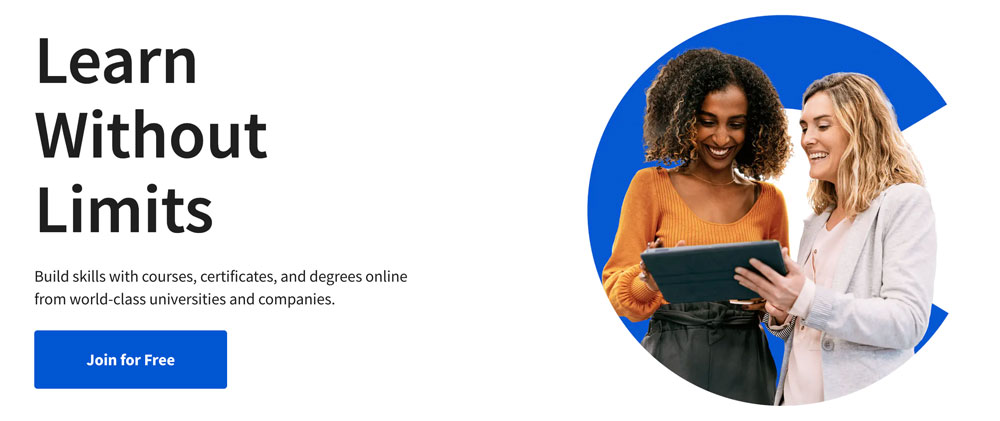
- Pros: Self-paced, run by Apple Certified Pros
- Cons: A bit dry
- Go to site
Coursera may only have a small number of online video editing courses, but the ones it does have are super-useful for specific purposes. They include Creating a Professional Video using Canva and Google Ads for Beginners, which are both highly rated, but our favourite is the hugely popular Mastering Final Cut Pro. You'll learn everything you need to know to use Apple's software with ease over the 40-hour course, and as it's self-paced you can stop and retake parts as often as you would like.
Over 21,000 people have already enrolled on this course, which is run by two Apple Certified Pros and is offered by online education heavyweight, LearnQuest. Some participants have found the style a bit dry, so be aware you're not getting a live learning experience here.
05. Learn video editing with Pluralsight
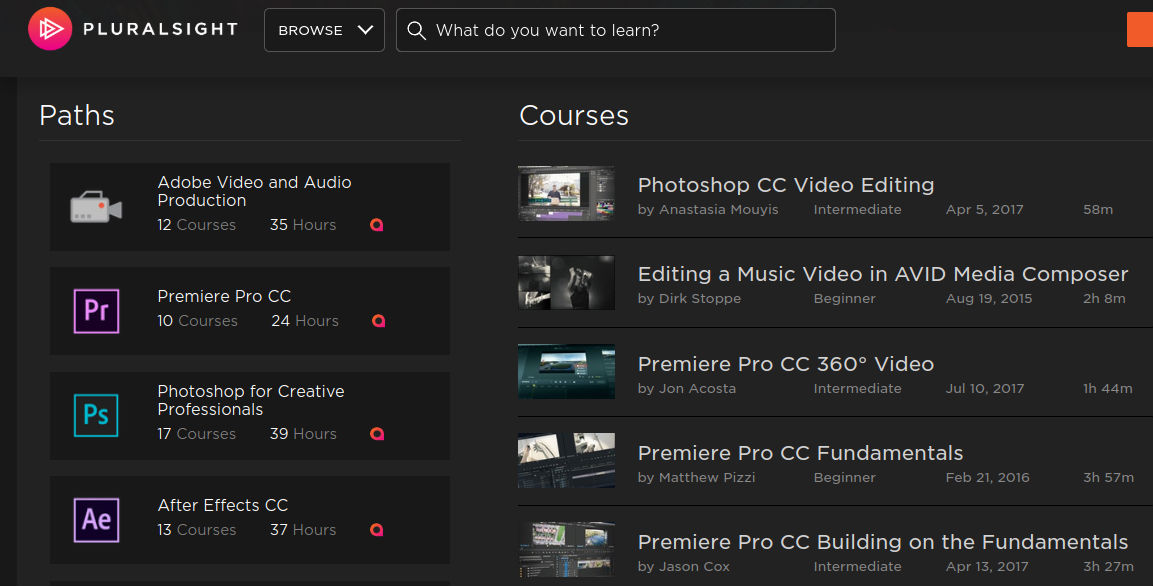
- Pros: Videos can be downloaded, learning checks keep you on track
- Cons: Some courses quite short, little use for non-Adobe software
- Go to site
Pluralsight offers a number of online video editing courses that will train you to use Adobe video editing software, including Premiere Pro, After Effects and Photoshop. These cover beginner, intermediate and advanced levels.
The Photoshop CC Video Editing course taught by Ana Mouyis, for example, covers how to edit videos, composite, and basic motion graphics. After this short course, you should be comfortable with video editing workflow and have the skills you need to embark on your own projects.
One of the coolest features of Pluralsight is ‘learning checks’, which are short quizzes to help you check you’re understanding the material correctly. It's a small thing, but it really can be helpful in keeping your learning on track.
If you wish to download videos for offline viewing you can do so via the mobile app. And note that Pluralsight offers a 10-day free trial, so you can ‘try before you buy’.
06. LinkedIn Learning (previously Lynda.com)
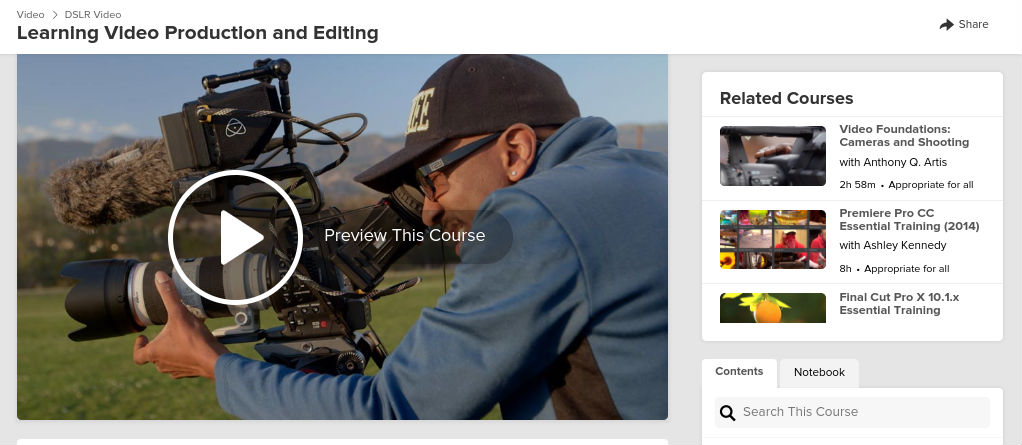
- Pros: Can download videos, LinkedIn integration
- Cons: Academic approach may not suit, some videos feel over-long
- Go to site
Founded in 1995, Lynda.com is the most established and respected source of software training on the internet. Now rebranded as LinkedIn Learning, the service gives you access to all its courses once you take out a monthly subscription. Premium members can download entire courses and individual videos on most desktop, iOS and Android devices using the app.
There are almost 200 online video editing courses to choose from, covering software including iMovie, Final Cut Pro X, Premiere Pro, and Media Composer. Because of this wide range, Lynda is worth looking at if you’re after something specific. For example, Premiere Pro Guru: Multi-Camera Video Editing by Richard Harrington is a two hour course that teaches you how to import, sync, and edit footage from multiple cameras with Premiere Pro.
The style of tutorial is a little more formal and academic than most online course providers, which may be a positive or negative depending on what you're looking for. If you want to see the kind of thing you’re getting, then just check out the free video tutorials that come with every course. You can also take out a month’s free trial that will give you access to all the courses on the platform.
One more thing: the move from Lynda.com to LinkedIn Learning is not just a name-change; there's some nice integration between the courses and LinkedIn too.
For example, if you're logged into LinkedIn, the platform now uses the data it has on you to surface training content that’s relevant to your needs. Also, when you learn new skills from taking a course, it’s super-easy to add those skills to your LinkedIn profile. Don’t worry, though: if you’re not on LinkedIn you can ignore all of that, and just focus on taking the course.
07. Video editing courses with Skillshare
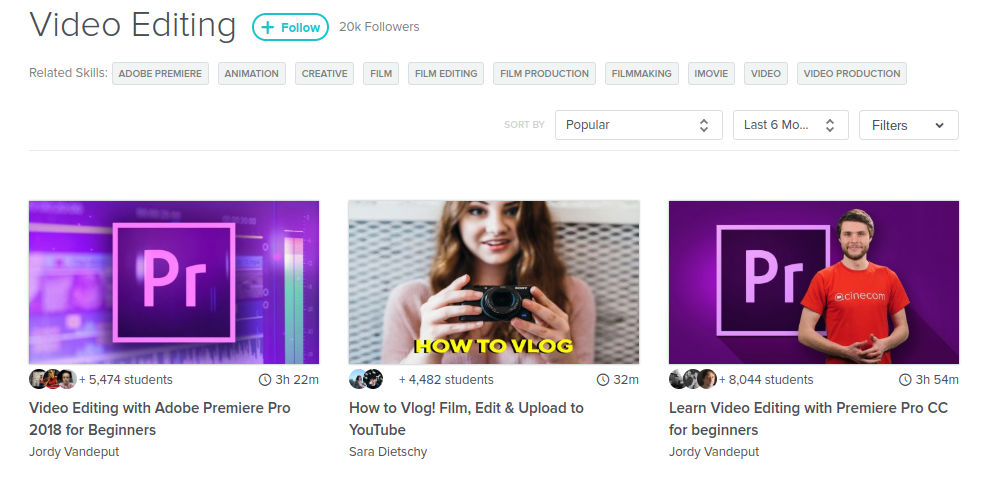
- Pros: Wide range of topics, videos can be downloaded
- Cons: Variable quality, some courses quite short
- Go to site
Skillshare is an online training platform where anyone can create a course and sell it. This creative free-for-all means that it’s a good place to find relatively short and punchy video lessons on niche topics, and that applies to video editing as much as anything else.
For example, if you’re a student who’s completely new to video editing, How to Vlog! Film, Edit & Upload to YouTube by Sara Dietschy is a snappy, no-nonsense guide to the basics of creating a vlog, across 32 minutes. Watch the first video, which you can access for free, and you’ll soon get the idea.
Bite-sized online video editing courses such as this are usually less academic and more casual when compared with, say, LinkedIn Learning. But if you just want to start getting your head around stuff quickly, that might actually be preferable.
Plus, you can take out a month’s free trial first to see if it’s for you, before parting with any cash. And if you do decide to purchase, then videos are downloadable within the app for offline use.
08. American Graphics Institute
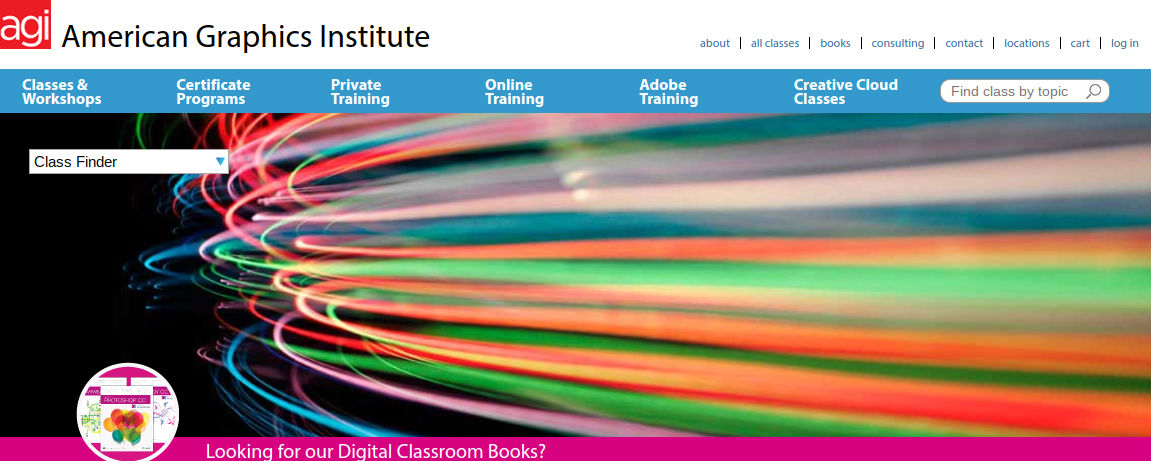
- Pros: Live lessons, interaction with tutors
- Cons: Expensive option, only available on certain dates
- Go to site
Want to learn Premiere Pro? Looking for live instruction rather than pre-recorded videos? The American Graphics Institute, a publishing and training venture, is offering online classes led by live instructors. These regularly scheduled lessons range from introductory to advanced levels, and if you can get to Boston, New York or Philadelphia, there’s also the option of attending physical lessons too.
You pay per course, and it’s not cheap. But the value of having interactive classes, in which you’re able to ask questions, hear and talk with the instructor, and even share your screen, means you really do get what you pay for.
09. Ripple Training video editing course
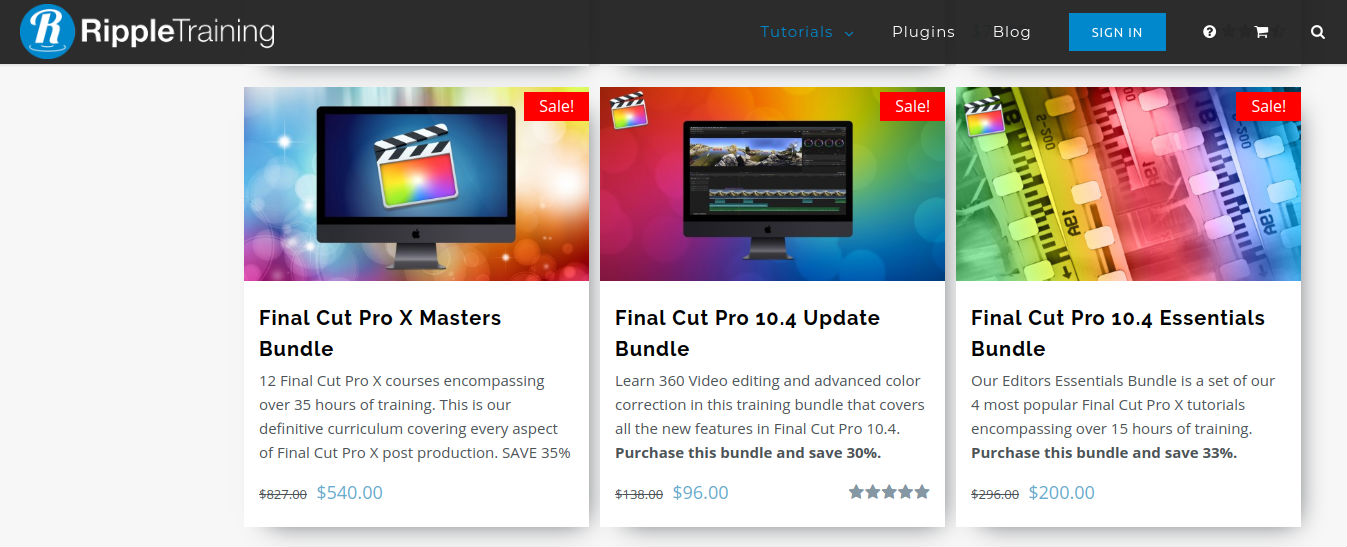
- Pros: Good quality tutorials, free taster lessons
- Cons: Only covers specific tools, some courses are quite expensive
- Go to site
These days, most online video editing courses focus on Adobe software. But if you’re using Final Cut Pro, Motion, or Da Vinci Resolve, you may be better heading to Ripple Training, a source of high quality, regularly updated tutorials in said software, as well as their own tools and plugins.
Founded by experienced industry professionals Steve Martin, Jill Martin, and Mark Spencer in 2002, Ripple Training isn’t a particularly big name in the field. But their courses, which mirror the in-person classes they teach, are very good quality, and you can download the videos for offline viewing. To see what they’re about, check out the free ‘get started’ lessons at the bottom of their homepage.
Read more:
- Best software for editing videos for YouTube: Get your work seen online
- 10 video editing tips for beginners
- Adobe software list: Which apps do you need?

Thank you for reading 5 articles this month* Join now for unlimited access
Enjoy your first month for just £1 / $1 / €1
*Read 5 free articles per month without a subscription

Join now for unlimited access
Try first month for just £1 / $1 / €1
Get the Creative Bloq Newsletter
Daily design news, reviews, how-tos and more, as picked by the editors.

Tom May is an award-winning journalist and editor specialising in design, photography and technology. Author of the Amazon #1 bestseller Great TED Talks: Creativity, published by Pavilion Books, Tom was previously editor of Professional Photography magazine, associate editor at Creative Bloq, and deputy editor at net magazine. Today, he is a regular contributor to Creative Bloq and its sister sites Digital Camera World, T3.com and Tech Radar. He also writes for Creative Boom and works on content marketing projects.
